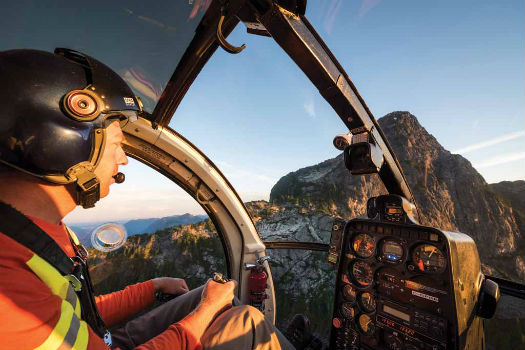
New fatigue management regulations proposed by Transport Canada would dramatically increase pilot staffing requirements for many small air operators, including helicopter operators. While some pilots welcome the proposed regulations, operators are worried about the associated expense — and whether they’ll be able to find enough experienced pilots to meet their requirements. Bill Campbell Photo
Should a pilot be allowed to work a 14-hour day?
It’s a simple question, but the answer isn’t obvious. For many helicopter pilots who routinely work 14-hour days — on firefighting contracts, for example — the answer is, “Of course.” For others, the answer is, “Of course not.”
That’s because there’s a lot of variability in how a pilot feels at the end of a 14-hour shift — it depends on the pilot and the job, and on the weather, and the pilot’s home life, and the countless other factors that combine to make one day harder than the next. We do know that, on average, 14-hour days aren’t optimal for safety. In a widely cited 2003 study of aviation accident data, even 10- to 12-hour duty days were associated with a significantly higher risk of an accident. Meanwhile, pilots who had been on duty for 13 hours or more had an accident rate that was five-and-a-half times higher than would have been expected if accident rates were independent of time on duty.
But suppose you support long duty days anyway, perhaps because you believe the associated risk can be managed effectively, or because in certain situations shorter duty days simply aren’t practical, regardless of the risk. In that case, how many consecutive 14-hour days should a pilot be allowed to work? Here, too, opinions vary. For the United States Forest Service, the answer is 12, depending on how much flying is being done. Under new regulations proposed by Transport Canada, the answer is 15 — although other provisions would combine to limit any single scheduled duty period over those 15 days to 12 hours, and the average duty period to just 10 hours.
That’s substantially less than what Canadian Aviation Regulations (CARs) currently permit for air taxi and aerial work operations — which is up to 42 consecutive days of 14-hour duty periods — and dramatically less than what is allowed by U.S. Federal Aviation Regulations (FARs). In the U.S., a part 135 air taxi pilot using calendar quarter limits could conceivably work 14-hour days for up to 158 days straight. Many other U.S. helicopter pilots have no restrictions on their flight and duty times at all.
Is Canada on the right track, bringing outdated regulations into line with modern fatigue science in a way that enhances aviation safety? Or is it poised to enact needlessly onerous legislation that will devastate the Canadian helicopter industry, as well as many small airplane operators that supply vital services to the country’s North?
Not surprisingly, the answer depends on whom you ask.

The proposed regulations include a complicated matrix to limit the length of a flight duty period based on its start time and number of sectors flown. Some overnight duty periods would be limited to just nine or 10 hours. Mike Reyno Photo
“An Incredible Proposal”
The current controversy over flight and duty time in Canada dates to August 2010, which is when the Canadian Aviation Regulation Advisory Council (CARAC) Technical Committee struck a working group to review and recommend changes to the country’s existing flight crew fatigue management regulations. Unlike many aviation rulemaking activities, this one wasn’t sparked by a high-profile accident or series of accidents. Rather, according to Transport Canada, the impetus came from new International Civil Aviation Organization (ICAO) standards, which required member states to review and update their regulations as necessary to reflect the latest fatigue science.
The working group was co-chaired by Dan Adamus, president of the Canada Board of Air Line Pilots Association International (ALPA), and Jacqueline Booth, chief of Technical Program Evaluation and Coordination at Transport Canada. Among the 11 other working group members were representatives from various labor unions and industry associations, including the Helicopter Association of Canada (HAC) president Fred Jones.
Divisions within the group became apparent early on. In various written submissions made in March, June, and July 2011, HAC and other trade associations contended that the working group process was being driven by the interests of organized labor and airlines (which operate under subpart 705 of the CARs) to the detriment of aerial work, air taxi, and commuter operators (which are regulated by subparts 702, 703, and 704, respectively). After the working group co-chairs issued their final report in August 2012, the same associations issued a lengthy joint dissent, arguing that the report’s recommendations embodied a “one-size-fits-all” approach that was poorly suited for the complexity and breadth of aviation in Canada (see Vertical, p.50, Oct-Nov 2012).
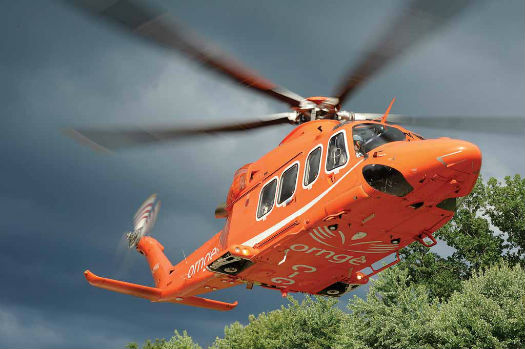
Ornge COO Rob Giguere said that Ornge is pleased to see Transport Canada devoting attention to fatigue management, describing the rulemaking effort as “a very important initiative.” However, he said that the regulations as currently proposed don’t recognize the uniqueness of air ambulance operations. Mike Reyno Photo
Despite this protest, the CARAC Technical Committee unanimously recommended that the Civil Aviation Regulatory Committee (CARC) review the working group’s report. That was the last that industry heard about the matter for 21 months. Then, in September 2014, Transport Canada issued a Notice of Proposed Amendment (NPA) for flight crew fatigue management regulations that closely followed the recommendations of the working group report. Industry was initially given just 15 business days to study and comment on the proposed regulations (although that comment period was later extended).
The associations that had objected to the original working group report immediately mobilized their members to campaign against the NPA. On Oct. 17, 2014, a coalition of 10 associations, including HAC, made a 158-page joint submission to Minister of Transport Lisa Raitt outlining their objections to the NPA and providing detailed examples of how their members would suffer under its proposals. “The proposed regulations impose a ‘one-size-fits-all’ solution that will achieve no improvements in safety, but will devastate large segments of commercial aviation,” the coalition stated, citing significant new costs and requirements for flight crews.
There’s no question that, if implemented as proposed, the new rules will have far-reaching impacts for many small Canadian air operators, including helicopter operators. That much is admitted in the NPA itself, which describes the impact of the new rules on Subpart 705 operators as “minimal,” on Subpart 704 operators as “more pronounced,” and on Subpart 703 and 702 operators as “significant,” noting, “Adjustments to schedules may be required.” For many operators, “significant” is an understatement. “We consider it an incredible proposal that has the capacity to really decimate the industry,” said Terry Jones, director of operations for Highland Helicopters. When it comes to certain types of operations, he said, “There is a real possibility of not being able to provide the service.”
If enacted, there are several provisions that could have a particularly big impact on Canadian helicopter operators. First, the NPA drops the maximum length of a flight duty period (FDP) from 14 hours to 13, and it also makes the length of an FDP dependent upon when that FDP starts. This is to account for the degraded performance that people experience during their “window of circadian low,” which for most of us is between 2 and 6 a.m. FDPs that start between 11 p.m. and 4:30 a.m. will be limited to a maximum of nine to 10 hours, depending on the type of operation. Moreover, flight crewmembers will only be able to work three consecutive FDPs that infringe upon their windows of circadian low before operators must provide them with a local night’s rest.
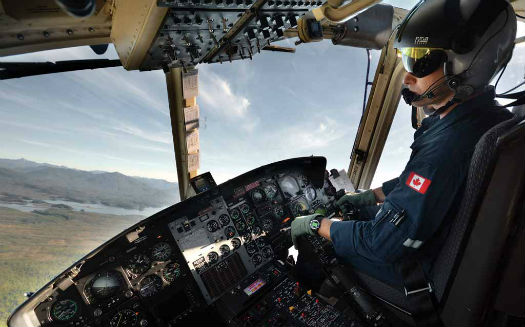
Will the proposed regulations enhance safety? Supporters say they will. Opponents argue that fatigue is only one factor that affects aviation safety, and that Transport Canada has failed to consider how the proposed regulations will influence other factors. Dave Wilson Photo
That will have a huge impact on emergency medical services (EMS) operators that must staff aircraft around the clock. According to the NPA, the restrictions are warranted by studies that show an “exponential” increase in risk over successive night duties, on top of a baseline 30 percent increase in relative risk when a night duty is compared to a day duty. However, EMS operations are unpredictable — it’s not uncommon for flight crews to do little or no flying over three consecutive night shifts, with ample opportunities for rest. “The rules as written don’t recognize the uniqueness of EMS operators,” remarked Rob Giguere, chief operating officer for Ornge in Ontario. “Some of the rules would impact on our ability to serve 24/7.”
The NPA also introduces cumulative duty limitations, which are absent from the current regulations. The scheduling option likely to be employed by most helicopter operators will limit pilots to 70 duty hours in any seven consecutive days, for an average duty period of just 10 hours. That will result in tremendous changes for the many visual flight rules (VFR) helicopter operators that support Canada’s resource sector, particularly during the long days of summer. Firefighting aircraft will need to be double-crewed to provide the same level of coverage currently being provided with single crews. So will helicopters supporting people in the field — such as drillers, geologists, and wildlife biologists — who work long days themselves. Any operators that avoid double crewing may instead find themselves having to dictate their customers’ work schedules, restricting them to shorter days that can be accommodated under the regulations.
Another provision that will dramatically increase staffing costs for operators supporting remote operations is the reduction in maximum tour length from 42 days to 15. For many pilots who work in Canada’s remote north, simply getting to and from the job site can take one to three days on either end of the tour — or longer, depending on weather delays. Such commutes are rarely inexpensive; increasing their frequency will create a new expense that must be absorbed by the operator or passed along to the customer. Neither option is particularly palatable to the Canadian helicopter industry, which is already in survival mode following a sustained economic downturn that hit the resource sector particularly hard (see p.48, Vertical, Oct-Nov 2014). One Subpart 703 helicopter operator that submitted comments to Transport Canada estimated that it would experience a 22 percent increase in staffing costs, and that up to 25 percent of its business would just disappear. “Our customers are very cost-sensitive (especially when the oil and gas prices start to head south), and will find alternate methods to helicopters and airplanes to conduct their current business models,” the operator wrote.
Moreover, the proposed regulations do away with the ability to reset to zero a pilot’s accumulated 30-consecutive day, 42-consecutive day, and 90-consecutive day flight times after five consecutive days free of duty — a provision that allows many seasonal operators to sustain a high work tempo during the summer months, with the expectation that their pilots will be doing little or no flying during the winter. “That zeroing provision is a major issue for us,” said Jones. “We want it back.” Jones noted, however, that HAC is concerned with the “stacking effect” of the proposed regulations, as much as with any single provision. “When you add it all up, it can very quickly become oppressive,” he said.

As an alternative to the flight duty period matrix in the proposed regulations, HAC and other associations are proposing a simplified formula that would provide compensatory rest for night operations. Mike Reyno Photo
“Fatigue is Fatigue”
For Canada’s small air operators, the business case against the proposed fatigue management regulations is crystal-clear. But maximizing profits is not the point of the new rules; their goal, in the words of the NPA, is to “reduce flight crew member fatigue related error and accident rates and thus enhance safety.” How well do the proposed regulations stack up from a safety perspective?
Not very well, according to the coalition of associations opposed to the NPA. The associations have advanced several safety-related arguments against the proposed regulations. First, they contend that the fatigue-related science on which the NPA is based is “ambiguous” and has been selectively referenced in support of the proposals that Transport Canada has advanced. So, they say, it’s not clear that the proposals will enhance safety in any way to begin with. They also point out that fatigue is only one factor that affects aviation safety, and that Transport Canada has failed to consider how the proposed regulations will influence other factors — such as by increasing the frequency of crew changes, which may lead to an increase in transition-related errors, or by forcing operators to hire less-experienced and less-qualified personnel to meet their increased staffing needs.
Finally, the associations question whether fatigue is a significant problem within the industry at all. The preamble to the NPA points out that between 2002 and mid-2012, Subpart 702, 703, and 704 operators accounted for 94 percent of all commercial air accidents within Canada, and 95 percent of commercial air fatalities. “A majority of these accidents have human performance related cause factors,” the NPA states. “It is a fact that human performance is impaired by fatigue. This is not to say that all of these human performance related accidents are caused by fatigue, but it is [reasonable] to assume that fatigue is a contributing factor.” In their submission to Transport Minister Raitt, the associations tear apart this questionable reasoning, noting that many other factors could account for the accident rate, including the aircraft types being used, the environments in which they operate, and the relative experience of their pilots.
These are all solid points, but do they prove that fatigue is not an important issue for the industry, or that the proposed regulations won’t enhance safety? Not according to many pilots — including helicopter pilots — who are generally supportive of the NPA. Unlike airline pilots, helicopter pilots didn’t have union representation in the working group process that led to the NPA. Nevertheless, according to working group co-chair and ALPA Canada Board president Dan Adamus, “Many helicopter pilots wrote into Transport Canada to say, ‘It’s about time.’” And helicopter pilots have good reason to support the proposed regulations, Adamus explained in a recent interview with Vertical. Simply put, he said, the fatigue science on which the proposals are based doesn’t justify helicopter pilots working longer and harder than anyone else.

Fatigue is experienced differently by different individuals, and a pilot’s comfort level with a particular job may influence how quickly he or she becomes fatigued. “Depending on the competency and experience of the pilot, one job will fatigue a pilot more than another pilot,” observed Phoenix Heli-Flight’s Paul Spring. Mike Reyno Photo
“With the science, it was very evident that it didn’t matter whether you operated a helicopter or a Boeing 777. Fatigue is fatigue. A pilot is a pilot,” Adamus said. Not only that, he added, pilots flying small aircraft such as helicopters are often more likely to be fatigued than captains of large jetliners with multi-pilot crews and state-of-the-art automation. “Pilots who fly for the smaller operators would probably benefit from this rule more than anybody else,” he said.
While Adamus is supportive of the NPA, he noted that his personal involvement with the rulemaking process was limited to his role in the working group, which he described as having a relatively narrow mandate. “We weren’t there to deal with economics or political issues,” he said. “We were a safety group struck by Transport Canada . . .We used the science as much as possible.” Consequently, he objects to the trade associations’ assertion that “Transport Canada has allowed union pressures and unwieldy collective bargaining agreements to drive new regulations applicable to all sectors,” as the associations put it in their submission to Transport Minister Raitt.
“It’s actually pretty disappointing when you see some working group members wanting to lay blame with the co-chairs or with the big bad unions,” Adamus said. “There’s little or no science to back up their perspective, so they have to muddy the waters some other way.”
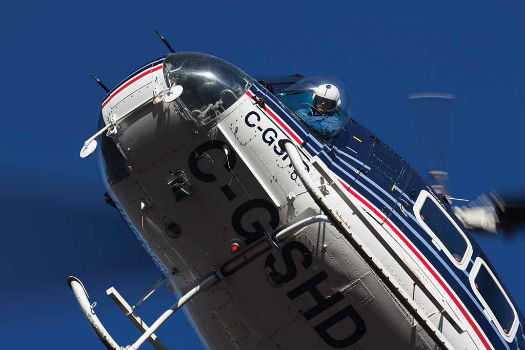
Seasonal operators that rely on a high tempo of operations during the summertime would like to preserve the maximum 14-hour duty day, as well as the ability to “zero” accumulated flight times up to the 90-day limits after five consecutive days off. Ian Wills Photo
Alternative Proposals
Is there viable middle ground in this debate — a way to strengthen Canada’s existing fatigue management regulations without imposing unacceptable costs on small operators? That’s the question presently before Transport Canada, which is in the process of reviewing feedback on the NPA before publishing a final proposed amendment in the Canada Gazette, Part I, later this year. As part of that process, the department brought together key stakeholders for a weeklong meeting in Ottawa, Ont., in mid-January. Among the attendees were HAC president Fred Jones, leaders of four other industry associations, and representatives from 18 diverse air operators, including helicopter operators.
“It was an interesting meeting,” Jones told Vertical immediately following the gathering. “We had an opportunity to present some alternate proposals to Transport Canada and to the airline pilots unions.”
Many small operators would like to see Transport Canada go back to the drawing board to develop sector-specific solutions for their operations. “I would like the government to go back to consultations with industry, but they need to talk to the 702, 703 group,” said Paul Spring, president of Phoenix Heli-Flight. “If we’re going to have meaningful meetings through the CARAC process, it needs to be by industry segment . . . that’s how you’re going to get industry buy-in.”
That is the course of action that was originally urged by trade associations including HAC, which have long pointed out that the FAA deliberately separated its fatigue management rulemaking for part 121 airlines from part 135 air taxi and other operators because of the complexity and diversity of the latter. This claim was recently confirmed to Vertical by an FAA spokesperson, who wrote in an email, “The part 135 community is very diverse with respect to the type of operations being conducted. . . Part 121 operations do not share the same level of diversity as seen in part 135 operations.”
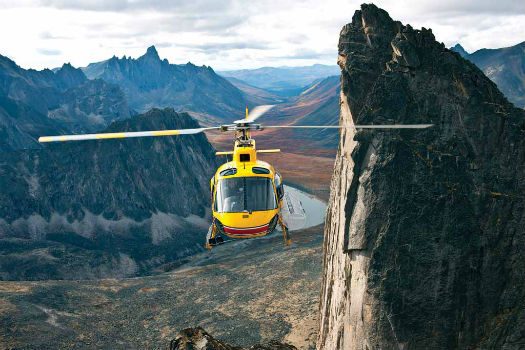
For many pilots who work in Canada’s remote North, simply getting to the job site can take one to three days, or longer depending on weather. Richard Hartmier
According to Jones, however, Transport Canada has made it clear that it wants to take a more unified approach with its fatigue management rulemaking, addressing all segments of the aviation industry with a single regulatory package. So, at the meeting in Ottawa, HAC and allied associations presented proposals that could conceivably be accommodated within such a framework. On some points the associations were strongly attached to the status quo — for example, in preserving a maximum 14-hour duty day and the ability to “zero” accumulated flight times up to the 90-day limits after five consecutive days off. However, the associations were willing to compromise in other areas, such as by reducing maximum tour lengths from 42 to 30 days (with provisions for emergency extensions owing to weather or mechanical delays to crew changes, under which the pilot being relieved would receive additional time off).
One of the most interesting aspects of the NPA is that it gives operators the option of implementing a fatigue risk management system (FRMS) in lieu of adhering to the prescriptive requirements. Similar to a safety management system (SMS), an FRMS would need to satisfy specific requirements and be approved by Transport Canada, but it could afford the necessary flexibility for medevac and other operators whose scheduling needs are difficult to square with a prescriptive regulatory framework. Jones said that there’s “widespread support” across the Canadian aviation industry for the FRMS concept, although he noted that the idea is largely untried, and that “the devil is in the details.” Even with the FRMS option on the table, however,
he said that the prescriptive aspects of the NPA must be substantially revised to avoid “a tsunami of requests from the industry for FRMS approvals . . . What’s more, the stand-alone prescriptive rules must accommodate the most common operational scenarios for those smaller operators who are unwilling or unable to implement FRMS.”
It remains to be seen whether Transport Canada will make those substantial revisions before proceeding to publication in Gazette I, potentially by early summer. Once the final proposed rule is published, the industry will have an additional opportunity to comment before a final rule is published in the Canada Gazette, Part II. At that point, the regulations are planned to go into effect immediately for Subpart 705 and 704 operators, while Subpart 703 and 702 operators should have an additional 24 months in which to demonstrate compliance.
In the meantime, Transport Canada isn’t giving much away, telling Vertical that it will give “due consideration” to the 94 written comments it received on the NPA, as well as to the discussions it heard in Ottawa. “In 2010, Transport Canada created a joint working group with industry to determine the most effective way of managing flight crew fatigue,” a spokesperson wrote in an email. “Transport Canada will continue to work closely with stakeholders to help them better manage flight crew fatigue and bring Canada’s standards in line with modern fatigue science.”





